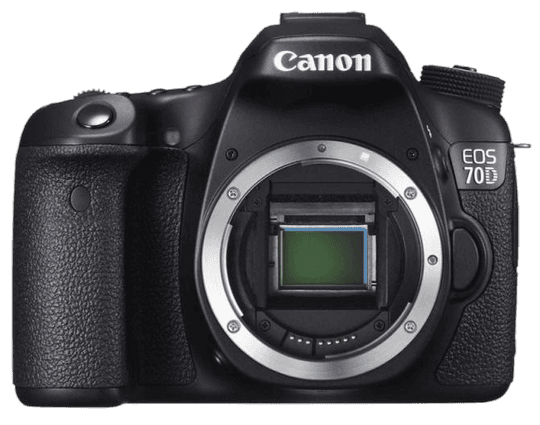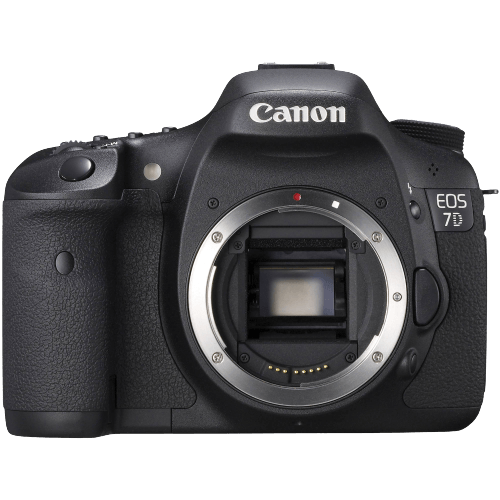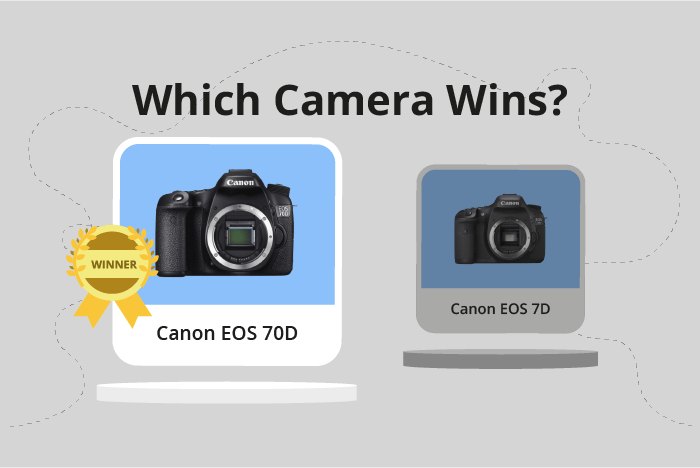Canon EOS 70D vs EOS 7D Comparison
Canon EOS 70D

Canon EOS 7D

The Canon EOS 70D emerges as the winner with a score of 60/100, while the Canon EOS 7D scores 45/100. Both cameras are DSLRs, released in 2013 and 2009, respectively. They share similarities in their general specifications, such as camera size and weight.
The 70D has the advantage of being lighter, weighing 755g compared to the 7D’s 860g. With a smaller body (139 x 104 x 79mm), it is also more compact than the 7D (148 x 111 x 74mm). This makes the 70D a more convenient option for photographers who value portability.
The 7D, on the other hand, was initially more expensive with a launch price of $1974, while the 70D debuted at $1199. This price difference does not necessarily translate to better quality, as the 7D has a lower score.
Taking these factors into account, the Canon EOS 70D is the better choice due to its lighter weight, more compact size, and higher score. The Canon EOS 7D, while more expensive, does not offer any clear advantages over its counterpart.
Canon EOS 70D vs EOS 7D Overview and Optics
The Canon EOS 70D emerges as the winner in this optics comparison, with a score of 58/100 compared to the Canon EOS 7D’s score of 43/100. Both cameras share several specifications, such as a CMOS sensor, APS-C sensor size, Canon EF-S lens mount, and the absence of image stabilization.
The Canon EOS 70D outperforms the 7D in some critical areas. Firstly, it has a higher megapixel count at 20.2, allowing for more detailed images. Secondly, the EOS 70D is equipped with the Digic 5+ processor, which is an improvement over the 7D’s Dual Digic 4 processor. This results in better image processing and overall performance. Additionally, the EOS 70D has a higher DXOMARK score for its sensor at 68, compared to the 7D’s score of 66, implying superior image quality.
However, the Canon EOS 7D does have an advantage in one area: shooting speed. The 7D can capture images at a rate of 8 frames per second (fps), while the 70D’s shooting speed is 7 fps. This makes the 7D slightly better suited for capturing fast-moving subjects, such as sports or wildlife photography.
Taking these factors into account, the Canon EOS 70D has a clear edge in terms of optics, thanks to its higher megapixel count, advanced processor, and better sensor performance. The Canon EOS 7D, on the other hand, is more suitable for photographers who prioritize fast shooting speeds. While both cameras are reliable options, potential buyers should consider their individual needs and preferences when choosing between the two.
Canon EOS 70D vs EOS 7D Video Performance
When comparing the video capabilities of the Canon EOS 70D and the Canon EOS 7D, both cameras have the same score of 43/100. This indicates that their video performance is quite similar. Both cameras share key specifications, such as Full HD maximum video resolution and 1920 x 1080 maximum video dimensions. Additionally, both cameras have a maximum video frame rate of 30fps and lack built-in time-lapse functionality.
Despite having the same score, the Canon EOS 70D has some advantages over the 7D. The 70D features a touchscreen, which makes it easier to navigate menus and adjust settings while shooting video. The 70D also has a higher resolution sensor, which can result in better image quality in certain situations.
On the other hand, the Canon EOS 7D also offers some advantages. The 7D has a more rugged build, making it more suitable for outdoor use and harsh conditions. Additionally, the 7D has a slightly higher maximum video dimension of 1921 x 1080, although this difference is minimal and may not have a significant impact on video quality.
Taking these factors into consideration, both the Canon EOS 70D and 7D are solid options for capturing video. The choice between the two cameras ultimately depends on the specific needs and preferences of the user. If a touchscreen and higher resolution sensor are important, the 70D may be the better choice. However, if a rugged build and slightly higher video dimensions are more important, the 7D could be the preferred option.
Canon EOS 70D vs EOS 7D Features and Benefits
The Canon EOS 70D emerges as the winner in the features comparison with a score of 70/100, while the Canon EOS 7D scores 54/100. Both cameras share some common specifications such as a 3-inch screen size and the absence of GPS and Bluetooth capabilities.
The EOS 70D offers superior features, including a higher screen resolution of 1,040,000 dots compared to the 7D’s 920,000 dots. This results in a clearer and more detailed display for better image review and menu navigation. Additionally, the 70D is equipped with a touchscreen, making it more user-friendly and efficient in selecting focus points and navigating through settings. The 70D also has a flip screen, providing greater flexibility in capturing images from different angles and aiding in self-portraits or vlogging. Furthermore, the 70D comes with built-in Wi-Fi, allowing for easy sharing of photos and videos and remote control of the camera using a compatible smartphone or tablet.
On the other hand, the EOS 7D lacks some of the advanced features found in the 70D. It does not have a touchscreen, flip screen, or built-in Wi-Fi. However, it is important to note that these features may not be essential for every photographer, and the 7D still performs well in other aspects. For instance, the 7D’s lower screen resolution may not significantly impact the overall shooting experience for some users.
Considering the differences in features, the Canon EOS 70D is the better camera due to its higher-resolution touchscreen, flip screen, and Wi-Fi capabilities. The EOS 7D, while lacking these features, remains a solid option for photographers who do not require these additional functionalities.
Canon EOS 70D vs EOS 7D Storage and Battery
The Canon EOS 70D outperforms the Canon EOS 7D in storage and battery with a score of 37/100, compared to the 7D’s 35/100. Both cameras have one memory card slot, and neither offers USB charging. They also share the same battery type, the LP-E6.
The 70D’s advantage comes from its battery life and memory card compatibility. With 920 shots per charge, the 70D lasts longer than the 7D, which offers 800 shots. Additionally, the 70D uses SD, SDHC, and SDXC memory cards, which are more common and versatile than the 7D’s Compact Flash, UDMA, and Microdrive cards.
The 7D does not have a distinct advantage in storage and battery. However, users who prefer Compact Flash cards may still find it suitable.
Considering these factors, the Canon EOS 70D proves to be a better choice in terms of storage and battery, with a longer battery life and more versatile memory card options. The Canon EOS 7D falls short in these aspects, making the 70D the clear winner in this comparison.
Alternatives to the Canon EOS 70D and EOS 7D
Are you still undecided about which camera is right for you? Have a look at these popular comparisons that feature the Canon EOS 70D or the Canon EOS 7D:

